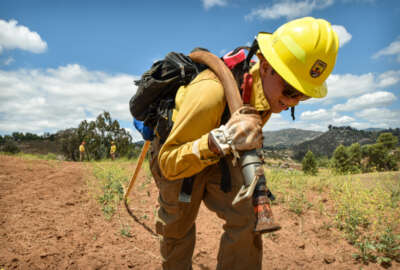2022 pay raise: Maybe not for you!
The good news for most white collar civilian federal workers is that President Joe Biden wants them to have a 2.7% raise in January, 2022.
The good news for most white collar civilian federal workers is that President Joe Biden wants them to have a 2.7% raise in January, 2022. That increase, proposed last Friday, would mean an across-the-board 2.2% raise with another 0.5% allocated for locality pay.
Equally good, for feds is that Congress is likely to go along with it, although some House Democrats are still pushing a 3.2% adjustment.
Even better news for perhaps a third of the workforce is that they will qualify for a WIG (within grade or longevity raise) based on their time in their grade and a satisfactory rating. The WIGS are worth about 3%. So for many its looking like a 2.7-to-3% raise. Not bad for government work. Not bad for anybody outside of Wall Street, or professional sports.
But, and you knew this, with good news often comes the bad. In this case the “losers’ in the 2022 pay raise will be a growing number of employees at the top of the civil service career ladder which has 15 levels (GS-1 through 15) and ten steps within in grade but the time most feds hit the FGS 15 level they are considered the best of the bests. Tops in their field (with the usual exceptions) and in many cases equal to or more qualified than their often higher-paid peers in the private sector.
Over the years, an artificial pay cap ($172,500) has kept many GS-15s from getting some or all of the raises their subordinates got. That barrier is pay for Level IV members of the executive service. Unless and until Congress raises it (and if frequently doesn’t) GS-15 pay can’t exceed it.
Most of the feds capped at $172,500 now work in the metro Washington D.C.-Baltimore area. This is headquarters for most places so that’s what you’d expect. The pay cap in D.C.-Baltimore currently extends down to step 7. But if other feds get a pay raise in 2022, the ceiling will be lowered to step 6 unless there is a raise for executes too.
But while the pay cap hits the most workers in the D.C.-Baltimore locality pay area, the impact is even tougher in Los Angeles-Long Beach, San Francisco-San Jose and other places. If feds in LA get a raise next year, the pay ceiling for GS-15s will move down from step 7 to step 6. In San Francisco-San Jose it would be even worse, moving down from step 6 to step 5.
Feds in other high wage locality districts would also feel the squeeze unless Congress lifts the pay cap.
While it is hard for many American workers (private or federal) to feel sorry for anyone making “only” $172,500, it might be worthwhile to give it a try. Obviously there are losers and time-servers everywhere, in almost every business. But after they leave government, many top political appointees —cabinet secretaries, agency and bureau heads — frequently express admiration for the career executives — GS and Senior Executive Service — they inherited. Often the were initially suspicious but came to appreciate and admire the career folks. Some of them even try to take their top federal staffers with them to the private sector, where pay, bonuses and perks are often better. As in a lot.
Meantime, the $172,500 pay cap hangs over a growing number of civil servants. To see how both regular and executive pay in your area compares with people doing your same job — but in Burlington, Vt. Vs. Houston, or Louisville or St. Louis — click here.
Nearly Useless Factoid
By Alazar Moges
Montana Republican Jeannette Rankin, in 1916, was the first woman elected to the U.S. Congress. She earned a second distinction by joining 49 House colleagues in voting against entry into World War I. That vote destroyed her prospects for reelection in 1918.
Source: U.S. Senate
Copyright © 2025 Federal News Network. All rights reserved. This website is not intended for users located within the European Economic Area.
Mike Causey is senior correspondent for Federal News Network and writes his daily Federal Report column on federal employees’ pay, benefits and retirement.
Follow @mcauseyWFED






